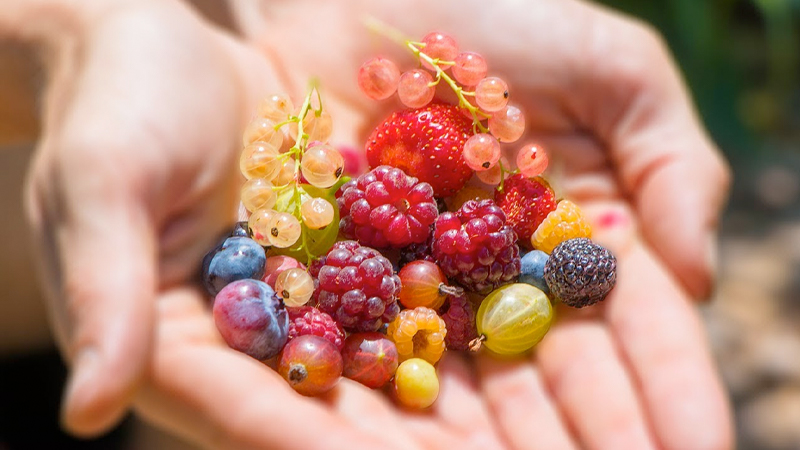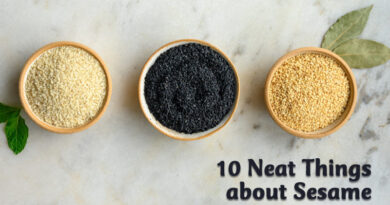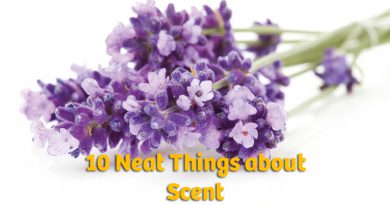Berries in the garden
Do you ever feel like blueberries are so hard to grow it isn’t worth trying and raspberries are so easy to grow they overrun the garden? Don’t give up! With a little know-how — and tough gloves for hacking at raspberry canes — you can succeed with these two traditional favourites. But don’t stop there. There’s a whole host of berries to plant in the garden that many gardeners aren’t familiar with (most of them are technically, botanically, small fruits rather than berries— see sidebar), and they’re considerably easier to control than blueberries and raspberries.
Blueberries
Blueberry bushes come in three formats. There is highbush, which produces the bigger berries commercial producers grow but is subject to being killed off in winter temperatures under –30 degrees. There is lowbush, which is the type you find in the wild in sandy regions of Canada; it is a low, spreading plant with smaller berries and better cold hardiness. The third is halfhigh, a mix of the two, which offers the bigger berries on a hardier bush.
When you choose a cultivar, you would be better to choose two or more of this berry to plant in the garden; most blueberries require cross-pollination to produce fruit, and those that don’t require it tend to have higher yields when cross-pollination is available.
Growing blueberries is a commitment; it isn’t something you can just have a go at for one year. These pernickety plants, which will happily colonize wild areas after a forest fire, have specific requirements that are different from most of what you grow in your garden.
Blueberries require a very rich but freedraining soil that is quite acidic: 4.5 to 5.5 pH. Chemically speaking, it’s more difficult to lower soil pH than to raise it (make it more alkaline). To have success with blueberries, mix up a growing medium of peat moss, sandy loam and composted oak leaves. Mix in aluminum sulphate on an annual basis to keep the pH low, but be careful with the digging since blueberries have shallow, delicate roots.
There is an advantage to blueberries’ shallow roots: it makes them appropriate for planting in containers, which makes it easier to control their soil environment. Sink the planted containers into the ground in winter, or year-round if you prefer, so the bushes don’t freeze to death.
Now comes the patience. Disbud high or half-high blueberry bushes for the first two years. Remove all the flowers so that the plant puts its energy into developing itself rather than into developing fruit. Prune out the spindly canes of these two at the end of winter, before buds break but after all likelihood of frost has passed.
With lowbush varieties, you should cut them pretty much to the ground every other year to encourage new growth through underground runners. You won’t get a yield that year, so it’s advisable to have twice as many plants as you’d be inclined to grow so that you can alternate pruning and harvesting years.
Keep your blueberry bushes watered but don’t let the roots stand in water. If rabbits are a problem in your yard, protect your blueberry bushes with physical barriers.
Other than that, blueberries are pretty worry-free!
Raspberries
There is no replacement for having your own raspberry bushes in the garden. Fresh raspberries just don’t travel or store well, so those that are commercially available are more like a cheap knock-off that costs an arm and a leg. Worse, all too often there is mould at the bottom of the tiny cardboard half-pint they come in.
Red raspberries tend to be the hardiest, though ‘Fall Gold’ and ‘Purple Royalty’ are designated hardy to zone 2. Different varieties have different harvest times; the highly productive ‘Boyne’ raspberry gives one very heavy crop in July. Raspberries with “everbearing” in their names tend to fruit once in summer and again in fall.
Raspberries prefer good sun and good drainage. They are susceptible to some root diseases common to potatoes, tomatoes and strawberries, so avoid areas that have housed these crops. It is best to provide a good bit of space for your raspberry patch. The traditional method is to plant them in rows, with the rows about four feet apart and the new canes about two feet apart along the row. Keep in mind that a raspberry patch can remain productive for many years and choose your site carefully.
Keeping raspberry canes in check can require a thick skin – literally. The plants are very prickly and require thinning on an annual basis. The raspberry cane is a strange duck in the plant world: the root system is perennial, but the above-ground portion, the woody canes, are biennial. Raspberry canes produce fruit in their second year and then die.
Cut out the canes that have fruited once harvest is done, then take your loppers out again in spring to remove any weak, spindly canes. Your goal is to have 15 good canes per foot along a row.
The dead and removed second-year canes are replaced by first-year canes, which are replaced by new suckers and shoots. Which become second-year, fruit bearing canes the next year. Such is the cycle of life in the raspberry patch.
Saskatoons
Saskatoon berries, serviceberries, June berries — different names for the delectable fruit of the Amelanchier alnifolia tree or shrub. It is native to much of Canada, from the Yukon to southern Quebec, and extremely hardy so a great berry to plant in the garden. It’s also quite pretty in early spring with its clusters of white flowers.
Saskatoon berries will grow in most soils in the garden, though with a heavy clay you will need to mix in plenty of organic matter. They don’t like to have soggy roots. Prune in early spring before the buds break, with the goal of keeping the saskatoon open for light and air circulation. Pruning also stimulates new growth, and berries from newer wood are larger.
Harvest time is in July. Fruit are at their ripest when they are of an evenly deep colour. For making jam, pick berries before they’re fully ripe, when the colour is deepening from red to purple; pectin content decreases as the berries get riper and sweeter.
Don’t expect much yield for the first two or three years, but once your saskatoon starts producing, you can get a good 30 years of deliciousness out of it!
Honeyberries
Honeyberries or haskaps are the blue, elongated fruit from a particular species of honeysuckle, Lonicera caerulea. The species grows wild in Russia and parts of Canada, but fruit quality is higher in the cultivars. Though little work had gone into developing cultivars in North America until a few years ago, Russians have been doing it for decades.
Similar in taste and use to blueberries, honeyberries are far far easier to grow. The plants are hardy — the main development of the plant is happening at the University of Saskatchewan — with blossoms able to withstand temperatures as low as –7 degrees. They like soil on the alkaline side, like most of the ornamentals we tend to grow, and full sun for at least four to six hours per day. Fruit is ready in June.
Plant at least two varieties because honeyberries need to cross-pollinate. At this point, the cultivars seem to be miraculously pest- and disease-free.
Currants and gooseberries
Currants and gooseberries in their fresh form are making a comeback as dessert garnishes at fancy urban restaurants in North America after decades of the shrubs being banished as carriers of white pine blister rust. Though the fruits look quite different, both currants and gooseberry plants belong to the genus Ribes and have similar growing requirements.
Some species of ribes are native to Canadian forests, and those are very hardy berries for the garden. European cultivars are also available, but may not have as much success in colder areas.
Ribes are easy to grow, requiring average soil of average structure and pH, but producing better in rich soil. They like about an inch of water per week between blossom and harvest, which is around late July. Not all require cross pollination, but yields are higher when multiple varieties are available.
The main problem is disease. Since they can harbour white pine blister rust, don’t plant them within 1,000 feet of five-needle pines. They are also susceptible to powdery mildew. There are mildew- and rust-resistant varieties you can choose, and employing good cultural practices will help. Plant the shrubs in full sun (this is contrary to some American instructions; the plants need relief from sun in places like California) and space them sufficiently to encourage good air circulation – about three to five feet apart. Sufficient irrigation also helps, as does annual pruning. On a mature bush, keep a total of about 12 shoots when you prune in early spring, and cut out any wood over three years old.




